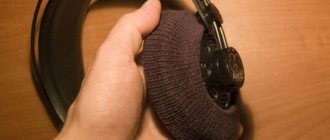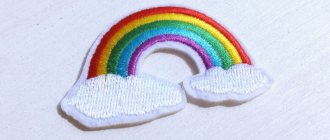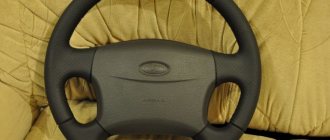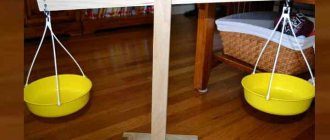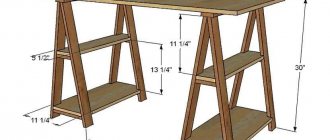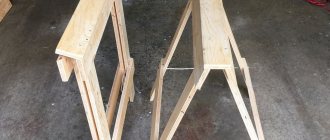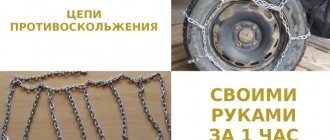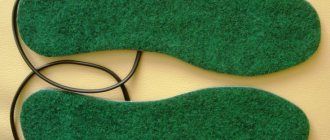In the CIS (and not only) there are large communities of enthusiasts who are developing the topic of independent production of electroacoustic equipment, including headphones. An incredible amount of material has accumulated in this area, so it’s time to collect all the main developments and conclusions in one place. The article reveals design issues: where it all begins, what technologies exist, typical problems are considered and how they are solved. The article is intended for those who want to assemble their headphones from scratch, but will also be useful to all those who simply want to understand more about sound.
How to make headphones with your own hands
Let's start with step-by-step actions:
First you need to purchase an output that will be suitable for a computer or mobile source. The most common today is miniJack. Its diameter comes in 6.3 mm and 3.5 mm. The second one is more in demand and everyone has used it at least once in their life.
Now you need to remove the cover from the plug that you purchased. A strong and reliable cable must be passed through this hole so that it can have four cores.
The wire is secured with a stand on the top of the plug. It is equipped with a hole. For this hole it is necessary to solder several conductors. There are two conductors left. They need to be soldered to small contacts.
Secure the entire structure with electrical tape. Check the device with an ohmmeter for short circuit problems.
We are looking for several speakers that have the same diameter. Eight ohms should be the resistance of each of them. They need to be inserted into special bets. Typically, this procedure requires plastic jars.
You need to attach a metal ruler to the headband. Then we connect two wires to each of the emitters and connect one of them to the plug stand, the other to some small contact.
Mainstream
The bulk of craftsmen are focused on magnetoplanar technology. Based on the totality of characteristics, this is currently the most interesting technology, both in terms of consumer qualities and the manufacturability of their manufacture. The easiest way to start is by experimenting with such headphones.
The whole essence of this technology is the presence of a flat conductor coil deposited on a film inside a system of permanent magnets. The magnetic field is configured in such a way that an Ampere force acts on the coil when a signal passes through it, which is transferred to the entire film. Due to this, the system performs work to create sound vibrations.
Here it is worth dwelling on a very remarkable point - the specifics of Soviet electroacoustics. The USSR produced many remarkable pieces of equipment that are still valued by collectors. We are interested here in the example of TDS-5 - the first Soviet magnetoplanar headphones. This is a replica of the Japanese Yamaha YH-1. At that time, magnetoplanar technology can be called advanced, since it provides much higher quality reproduction compared to classic speakers or transducers with a balanced armature, the so-called. fittings And all this with the same signal power level requirements as the speakers.
Membrane TDS-5
You can still find TDS-5, TDS-7 and other models of the family at flea markets. The older generation, which knows about the existence of these samples, is precisely the backbone of those who are engaged in the resuscitation of these headphones. It comes to the point where the membrane and magnets remain, everything else is completely replaced.
But there are other options. In the West, as well as among the younger generation in the CIS, Soviet Hi-Fi is not so popular, so independent modification attempts are taking place in a slightly different direction.
First of all, I would like to note products from the Japanese brand Fostex, the most affordable planars that have long been available on the market. This is the T50RP series (same as T40RP, T20RP). These headphones and their modification are incredibly popular (beware, heavy page) due to the affordable price of the headphones themselves. There is even a business based on providing modification kits and ready-made improved headphones (Mayflower Electronics, Dekoni Audio and others).
Don't forget about HiFiMAN. They have a very wide range of models. Most often, of course, they turn to younger models. Even though the products of the Chinese brand are not nearly as convenient for alterations as Fostex, accessibility and popularity are gradually leading to the development of this topic.
What about wireless headphones
Wireless headphones can be assembled. How to make wireless headphones? For this we need a couple of tools.
What is necessary
- The wire
- bluetooth adapter
- Charging device.
We carry out the assembly
- First you need to insert the Bluetooth adapter into the charger.
- We connect it to the stereo system.
- We open Bluetooth in the device through which music will be played.
- Let's connect and listen to music.
Now we have learned how to make Bluetooth headphones inexpensively and practically.
Packaging and delivery
And again there is a white cardboard box with a purple stripe, again a minimalist design and subdued colors. The design of the packaging is identical to the Fischer Audio Consonance box, which I talked about in the last review.
In addition to the “bullets” themselves, you will receive three pairs of single-flange silicone tips of different sizes (one is already put on the headphones), a pair of medium-sized double-flange tips, an unusually shaped clip for attaching the wire and a zippered case for carrying. Overall not bad for inexpensive headphones.
Microphone from headphones
If you are wondering how to make a microphone from headphones, then the answer is quite simple.
Many headphones (the speakers that produce sound) already have factory microphones installed. They allow you to communicate even on a computer without using a real microphone.
To do this, just insert the headphones into the computer, and then switch to the microphone.
Lightweight, beautiful, but inconvenient remote control
The body is made of plastic and aluminum, with a rubber earpiece running between the headphones. On the left is a remote control with not very convenient buttons and a built-in microphone. The buttons are flat, stiff, pressing blindly is not very convenient, adjusting the volume is difficult, you have to feel the remote control. While jogging or other activities, it’s not much fun, you need to get used to it.
It’s easy to forget about the headphones on your neck; they are quite light. However, like most models of this type. I liked the weight distribution; the headphones don’t slide to the side if you move sharply and quickly: run, jump, parkour, overcome rush hour in the subway.
It's better to buy headphones or make it yourself
It depends on how well you handle technology. If it’s easier for you to make your own headphones, then it’s better to buy the necessary components.
But you can buy inexpensive headphones that are of good quality, so you don’t need to waste effort. However, if you decide to make them yourself, then patience is required.
On the stage
In general, the process of modifying any headphones can be divided into two directions - improving the driver and fine-tuning the acoustics of the housing.
Driver HiFiMAN HE-400i
Drivers for production models, especially in the lower price segment, often have a simplified design. Sometimes it even comes to the point of reducing the strength of the structure, which, for example, some younger HiFiMAN models suffer from, when the frame on which the magnets are attached becomes deformed and the driver loses sensitivity due to the loss of the correct shape of the magnetic field. In addition, the youngest headphones of the same brand use ferrite magnets instead of neodymium ones, which, in my opinion, is completely bad manners.
In addition to the material, the shape of the magnets is of particular importance. In a magnetoplanar driver, the most important characteristic is the uniformity of forces applied to the membrane. Any irregularities lead to a huge amount of distortion. There are two ways to get rid of them: by selecting the track topology so that it matches the nonlinear field density or by designing a completely linear magnetic system. The vast majority of serial magnetoplanars use a topology with constant pitch tracks, so the whole problem is creating a uniform magnetic field.
The magnets themselves are overwhelmingly neodymium. But not everything is smooth with the material and quality of the magnets. The material itself is divided into grades. The main grade used is N (Normal) - suitable for normal conditions up to 80 degrees. Above that, they begin to lose their properties. The number in the stamp, for example N35 or N52, means magnetic energy in megaGauss-Oersteds. The more, the more powerful, but also more expensive. You should not order magnets from Ali; they clearly do not reach the declared characteristics in terms of magnetic energy compared to those produced, for example, in Russia. That rare case when it is better to order from local manufacturers.
Driver Fostex T50RP
In addition to the magnetic field of the system, but inseparably from it, there is the acoustics side of the magnetic system. The fact is that magnets and the magnetic system can form a noticeable obstacle to the sound. And any obstacle invariably degrades the sound quality; at best, the sound will simply lose some of its power. An illustrative example is Fostex T50RP with a magnetic core system. Such a system leads to the fact that the sound subjectively becomes somewhat “sawing”, and the reliability of high-frequency reproduction is lost. If possible, craftsmen try to get rid of this system either completely or partially, opening the membrane as much as possible.
An option for modifying the magnetic driver system from T50RP, the photo shows the location of the magnets, the magnets are also located on the reverse side
In addition, the magnets in such a system stand parallel to the membrane, covering part of the usable area. You can, for example, create a more powerful magnetic field simply by placing magnets across and doubling their number while maintaining the open area of the membrane. This is the deepest degree of modification. In fact, in such headphones there is nothing left except the original membrane.
Headphones with microphone
So, to find out how to make headphones with a microphone, just re-read the article again. Headphones with microphone required. You can make headphones using the method that we described step by step above.
However, if you need headphones with a microphone, then you need to find headphones that have a microphone. Then it will be possible to carry out the task you want to complete.
Remember that in this business you need to be good at soldering and working with micro parts.
Control Features
To turn off the headphones, just touch one to the other: they become magnetized and the music pauses. I wanted to listen to music again - we disconnected the headphones, inserted them into my ears and flew away. True, you will also need to press a button to turn on the music; playback will not start automatically. At least on Google Pixel 3 XL and iPhone XS.
If you press the single round button twice, then the headphones will connect to the last used device. If you hold it down for 5 seconds, it starts a search via Bluetooth.
By the way, if you have a OnePlus phone, then the headphones will connect to it automatically, a notification window will appear, as is done on the iPhone and AirPods or when connecting Samsung Gear IconX headphones to some Galaxy.
Photo tips on how to make headphones
Compatibility
Headphones are naturally optimized for simple sources, so they play just as well with inexpensive players and smartphones. I tested them with iPad Air, iPod Video 5.5G, Sandisk Sansa Clip, Rio Karma - the headphones play well with all of them, no sound degradation is observed.
The headphones are also very uncritical of the recording quality and forgive many flaws.
Bullet-shaped devices
The appearance of such sound emitters cannot be distinguished from an ordinary bullet. They are available in different colors - black, silver, gold, titanium. In the near future, other colors will appear on the market, as well as kits, for example, with a flash drive in the shape of a small pistol.
A little history
The first “bi-telephone,” as the first headphones were called, were patented back in 1891. And already in 1910 they were improved - they fit comfortably on the head and were adjustable in height. They were called Baldwin devices. They gained popularity only in the 1920s. In those days they began to be used for listening to radios. However, it was impossible to listen to music in them. The Swedish inventor managed to cope with this problem - his devices reproduced music with high quality.
